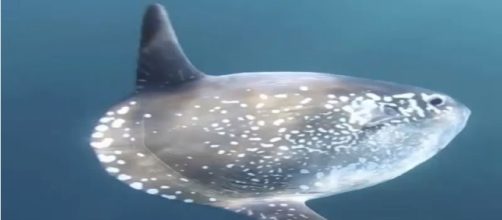A joint team of Australian and Japanese researchers have discovered a new species of Sunfish that escaped taxonomy records for almost 300 years. The new sunfish species is first to be discovered in the past 130 years, and is dissimilar from other sunfish species in terms of genetics as well as physical appearance.
Sunfish are difficult to track down
Sunfish are said to be the heaviest of all bony fishes. These odd-looking creatures can sometimes grow up to 3 meters in length, with a weight of over 2000 kg. These creatures are difficult to track down due to their solitary nature and their preference to live deep in the oceans.
The new sunfish species was discovered in New Zealand waters by researchers from the University of Tokyo, Hiroshima University, the University of Murdoch, and Te Papa. This research team had initially analyzed the DNA of more than 150 sunfish samples, and identified four different species of ocean sunfish based on their analysis. Because only three species of the animal had been categorized earlier, that meant the team had discovered a new species of ocean sunfish. Researchers named this elusive creature the ‘mola tecta’ derived from the Latin word tectus, which means hidden or disguised. The fish was also given an informal name “hoodwinker sunfish.”
Search for a living example of Mola tecta
The team then started the search for a living example of this creature in Indo-Pacific waters.
After a wait of four years, researcher Marianne Nyegaard, a Ph.D. student at Murdoch University, got a message from a New Zealand fishery about a dead sunfish that had washed up on the shores of Christchurch. When Nyegaard reached the site, she identified it as a hoodwinter sunfish. It was different from other sunfish, lacking a snout, strange humps, and being far slimmer than others. The DNA samples of the deceased animal were sent to other experts also who confirmed it to be a hoodwinker sunfish.
According to researchers, Mola tecta has been seen at several places including off the shores of Tasmania, South Africa, and southern Chile in recent times, suggesting that it prefers to live in colder waters.
Nyegaard and her team are now planning to find out more about the feeding habits and distribution patterns of Mola tecta with the help of satellite tagging. According to Andrew Stewart, collection manager at Te Papa, the latest discovery shows that it is possible to find new things in quite obvious places.
The details of new sunfish species have been published in the Zoological Journal of the Linnean Society.


